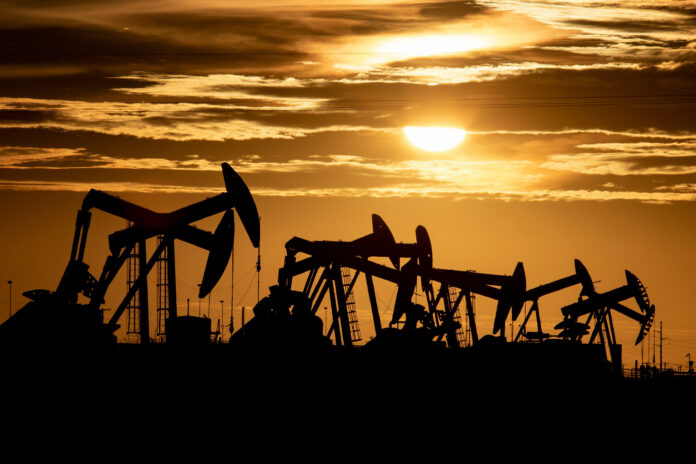
There is a lot of push and pull going on in the field of energy investments where billions of dollars are needed to advance technology, enhance infrastructure and ensure environmental safety, among other needs.
Odessa oilman Kirk Edwards, State Rep. Brooks Landgraf and Waco economist Ray Perryman say market forces will prevail after the radical environmentalist politics finally die down.
On Thursday, The Associated Press reported Senate Majority Leader Chuck Schumer and 22 other Democratic senators called on the Department of Justice to “use every tool” at its disposal to prevent and prosecute alleged collusion and price-fixing in the oil industry.
“The energy industry has been getting vilified by many different groups for many years, but the heat has really been getting turned up over the last few years, especially against the major oil companies and their boards of directors,” Edwards said. “You see so many advocate lawsuits and board company policy recommendations for folks like Exxon or Chevron to quit being involved in the production of oil and natural gas.
“Those same very loud advocates then go after the investment banks that help fund these oil and gas companies and that is where the pain can really be felt, the drying up of the pool of possible investors ahead.”
Luckily, Edwards said, Texas political leaders passed legislation specifying that if a company executive or his company takes a stand against the oil and gas industry, then that company will be banned from doing any business with the State of Texas.
“That shot across the bow by Texas sent some shivers across the spines of many of those investment companies and they have quickly rescinded their so-called green initiatives to be saner in their thinking ahead,” he said. “It’s a problem no doubt, but hopefully cooler and smarter heads will prevail.”
Landgraf said Texas, and especially the Permian Basin, remain a formidable powerhouse in oil and gas production while the Northeast grapples with its own set of challenges.
“Investments in advancing technology, enhancing infrastructure and ensuring environmental safety are undoubtedly critical with projections indicating that billions are needed over the next decade,” said Landgraf, an Odessa Republican who chairs the Texas House Environmental Regulation Committee in Austin. “Nonetheless the resiliency and ingenuity of the Basin exemplify the energy industry’s ability to adapt and thrive.
“With smart investments and innovative practices Texas is poised to maintain its position as a global leader in meeting energy demands while establishing a standard for responsible development. This is all the more reason to support and protect our vital region.”
Referring to his proposed Severance Tax Revenue and Oil and Natural Gas Defense Fund, Landgraf said, “That is why I am committed to passing my Texas STRONG legislation, which is designed to fortify our energy infrastructure, support energy-producing communities and ensure the enduring prosperity of the Permian Basin.
“American energy independence is worthy of the investment.”
Texas STRONG, which passed the House in 2023 but failed in the Senate, would dedicate a portion of severance tax revenue for the purpose of supporting transportation infrastructure, workforce and economic development, public education, healthcare and public safety needs in those regions of the state with the highest oil and gas production.
Perryman said environmental pressures and regulatory obstacles are clearly a consideration in having capital access for the oil and gas industry.
“In essence these obstacles raise the cost and risk associated with investments, thus impacting required returns and the flow of financial resources,” Perryman said. “This phenomenon is particularly true among some traditional sources of financing for energy development.
“In fact some banks and other entities have adopted explicit policies against such loans. Nonetheless there has been some evidence of backing off the most stringent such policies as shareholders and other stakeholders demand returns.”
Perryman said much of the industry is financed through equity and private debt, which is normally much less sensitive to such pressures but is also much more sensitive to returning cash to investors in an expedited manner.
“Investments are needed for pipelines, other infrastructure and downstream facilities as well as development activity,” he said. “In addition we will see continued pressure for investments that reduce emissions and other environmental effects of the industry.”
The economist said the sustainability of the industry must acknowledge that climate regulation is inevitable and invest in appropriate mitigation strategies.
“The recent discussion related to the Permian Basin becoming a non-attainment zone for air quality is one prominent example and we are likely to see others,” he said. “Even in the absence of such regulation, however, there will still be market pressures to produce oil and gas with a lower overall carbon footprint.
“The bottom line is that when the market needs to solve these problems, it will. Every set of projections of future energy needs indicates that an all-of-the-above approach will be required and fossil fuels will continue to be a part of the solution.
“We are also seeing the immense value of enhancing U.S. energy security in a time when geopolitical tensions are high.”
Perryman said that with the ongoing demand for oil and natural gas will come profitability at levels sufficient to attract the needed financial resources.
“In fact one of the forces underlying the recent spate of high-profile mergers and acquisitions in the industry is the ability to marshal the large amounts of capital that are required for future production,” he said.



